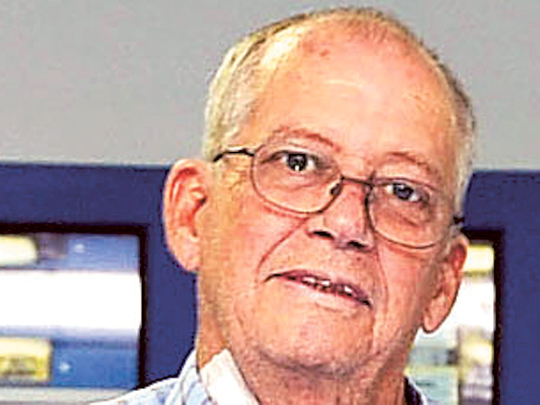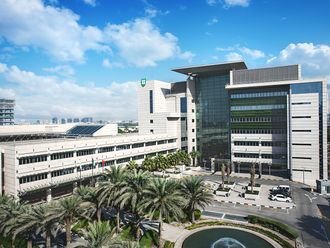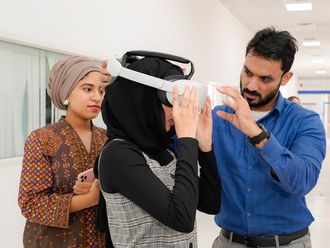
Dubai: In a first-in-the-region surgery, doctors at Rashid Hospital say they saved the life of a 69-year-old British expatriate by treating his diseased aorta.
The surgeons replaced his diseased aorta in a minimal invasive procedure with a custom-built aorta known as a ‘fenestrated stent graft’ that was manufactured following a three-dimensional model of the patient’s original aorta to get a perfect fit.
For nearly six months, Dennis Clark, a senior executive, was suffering from lower back pain.
“During a routine check-up, the X-rays revealed the problem was not in my back. I was suffering from a condition known as thoracoabdominal aortic aneurysm — a potentially deadly enlargement of the aorta, the main artery carrying blood from the heart to the body and vital organs. My aorta had enlarged to a point where I faced a risk of rupture,” he recalls.
Clark was also advised against flying.
So, the only option left was for him to look for a good cardiac surgeon in town. He approached Rashid Hospital which is known for its highly specialised vascular surgery unit. It took nearly four months for the surgeons to get a new aorta to replace his diseased one.
Explaining the challenges of this surgery, Dr Younis Kazim, head of vascular surgery at Rashid Hospital, said: “The patient approached us with a condition in which his main artery had expanded significantly and his condition was critical. Normally, the main artery is 20 to 30mm in width, his was 80mm. In such cases the chances of the artery erupting are high and that leads to immediate death.”
The team of surgeons chose the minimal invasive surgery route as opposed to the open surgery option because of several perceived risks.
Elaborating on the actual procedure, Dr Ayman Al Sibaie, consultant interventional radiologist at Rashid Hospital, said: “Using CT scans, a 3D model was made of his aorta and was sent to a US company that manufactured a new aorta keeping in mind the patient’s anatomy. The aorta has four custom-placed branches for the various critical vessels that supply blood to the kidneys, liver, intestines and other organs, allowing for a precise fit. It was assembled during the procedure. Any error in placing the stent graft could lead to mortality and, therefore, absolute precision was important.”
Dr Al Sibaie said the customer-made aorta known as ‘fenestrated stent graft’ was inserted in the body through the groin. “Using fluoroscopy guidance, the new aorta was implanted, we diverted the blood flow from the diseased aorta to the new device. The diseased aorta shrank back to its regular size but is of no use and the new aorta fulfils the function of providing blood flow to vital body organs.”
Three days after the procedure, Clark walked out of the hospital happy to have averted this health crisis. “I feel a little heavy around my chest and the surgeons have advised me against doing anything strenuous or lifting anything heavy. It will take time, but I am recovering well,” he added.












